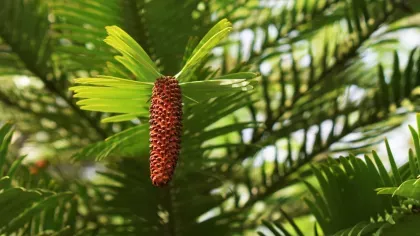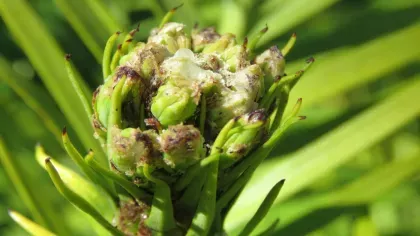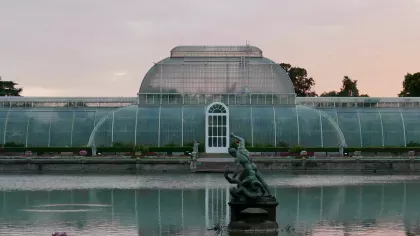7 January 2019
Back from the brink: 5 plants that almost became extinct
Meet our Temperate House hero plants that hung on in there even when the going got tough.

Cayman Sage
For nearly 40 years, it was thought that the cayman sage was extinct.
Salvia caymanensis is endemic to Grand Cayman (part of the Cayman Islands), which means it doesn't grow anywhere else.
It hadn't been seen since 1969, and was feared to be extinct. In 2005, conservationists commissioned local artists to create a wanted poster for this beauty - they offered a reward of $1000 Cayman dollars!
Almost two years later, a motorist waiting at some roadworks spotted the distinctive blue flowers growing at the side of the road, and the rest is history.
But the struggle isn't over yet, as this plant is still critically endangered.
St Helena ebony
This plant is a real hero.
Clinging onto life, St Helena ebony, or Trochetiopsis ebenus was believed to be extinct for 100 years. They were overgrazed by goats, and the last two plants left were spotted growing on the side of a cliff face.
A local guide called Charles Benjamin retrieved cuttings from one of these last wild specimens in 1980. He bravely carried a stem back up the mountain between his teeth, using a makeshift harness.
Thousands of St Helena ebony plants have now been propagated from these two survivors and replanted on the island.
Three kings vine
There's only one known specimen of this vigorous climbing vine living in the wild, which was found growing on the Three Kings Islands archipelago, 50km off the northern tip of New Zealand.
Feral goats had taken a liking to snacking on this tasty plant, so it was sadly on the verge of extinction when it was discovered in 1945.
Thankfully, the goats were eradicated from the island in 1946, which restored the ecosystem balance on the island.
Horticulturalists took cutting from the original plant, and ten years later Tecomanthe speciosa finally set seed. Since then, it's become a popular garden climber - quite the comeback.
Whorl heath
This pretty pink heather has been considered extinct in the wild for over 50 years but is on the brink of being restored to the wild in South Africa.
Erica verticillate, or whorl heath, grows near rivers and wetlands and has spiky needle-like leaves.
A cultivated specimen of whorl heath was rediscovered in a park in Pretoria in 1984.
Kirstenbosch National Botanical Garden led a campaign to repropagate the species and has since grown thousands of Erica verticillata and reintroduced them into the wild.

Yellow Fatu
Native to Pitcairn Island in the South-Central Pacific, this plant was discovered by a person living on the Island in 2003.
Cuttings and seed were collected from the Abutilon pitcairnense and grown in the island's nursey. By 2004, there were seven successful germinations and several rooted cuttings in Pitcairn.
But in 2005, a landslide killed the only wild plant, making it extinct in the wild.
Luckily the cuttings survived and some of them came to Kew from Trinity College collection in January 2010. This plant is now flourishing in the Temperate House.


